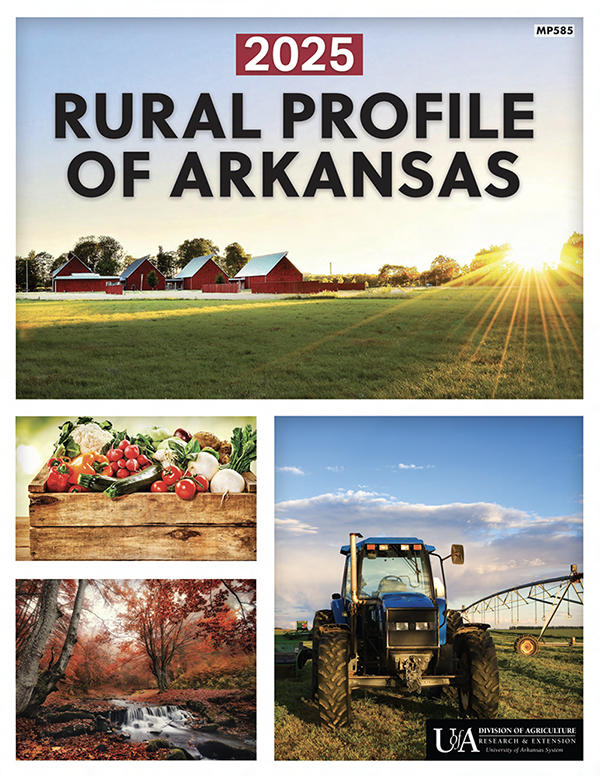Economic Analysis
Rural Profile of Arkansas
The Rural Profile of Arkansas 2025 is now available. Download your free copy today!
Arkansas communities have changed greatly over the past decade. Many rural areas in the state continue to recover from the Great Recession while others grow and thrive.
To enrich communities, local leaders must be aware of factors of change in the state.
The Rural Profile of Arkansas analyzes the trends of key indicators for communities in Arkansas, which include:
- Population,
- Economy,
- Infrastructure,
- Social and Economic Stress,
- Health,
- Education, and
- Local Government.
The Rural Profile also compares trends in rural and urban counties and among regions of the state.
Rural Profile Infographics
Topics
|
Population |
|---|---|
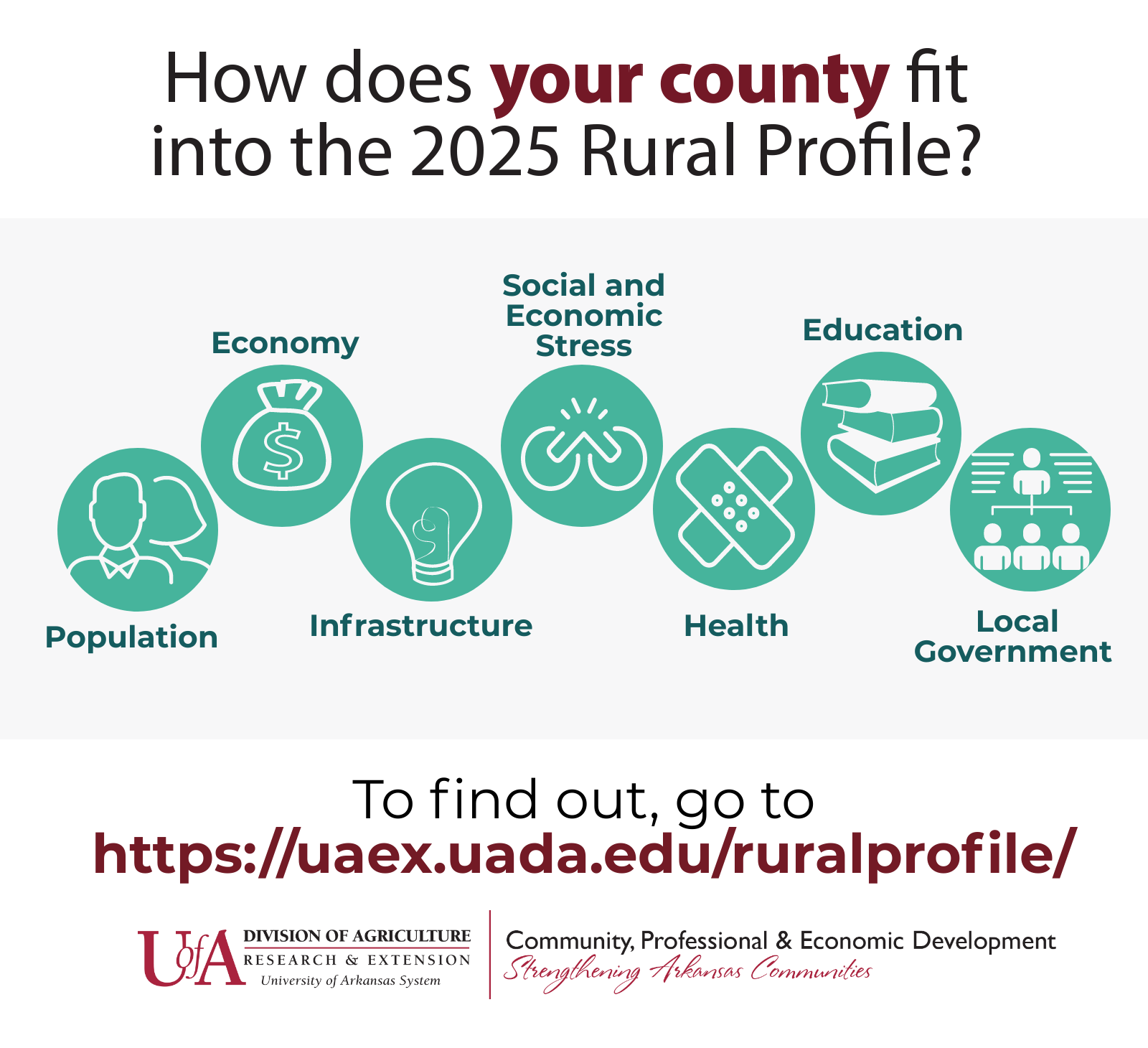 |
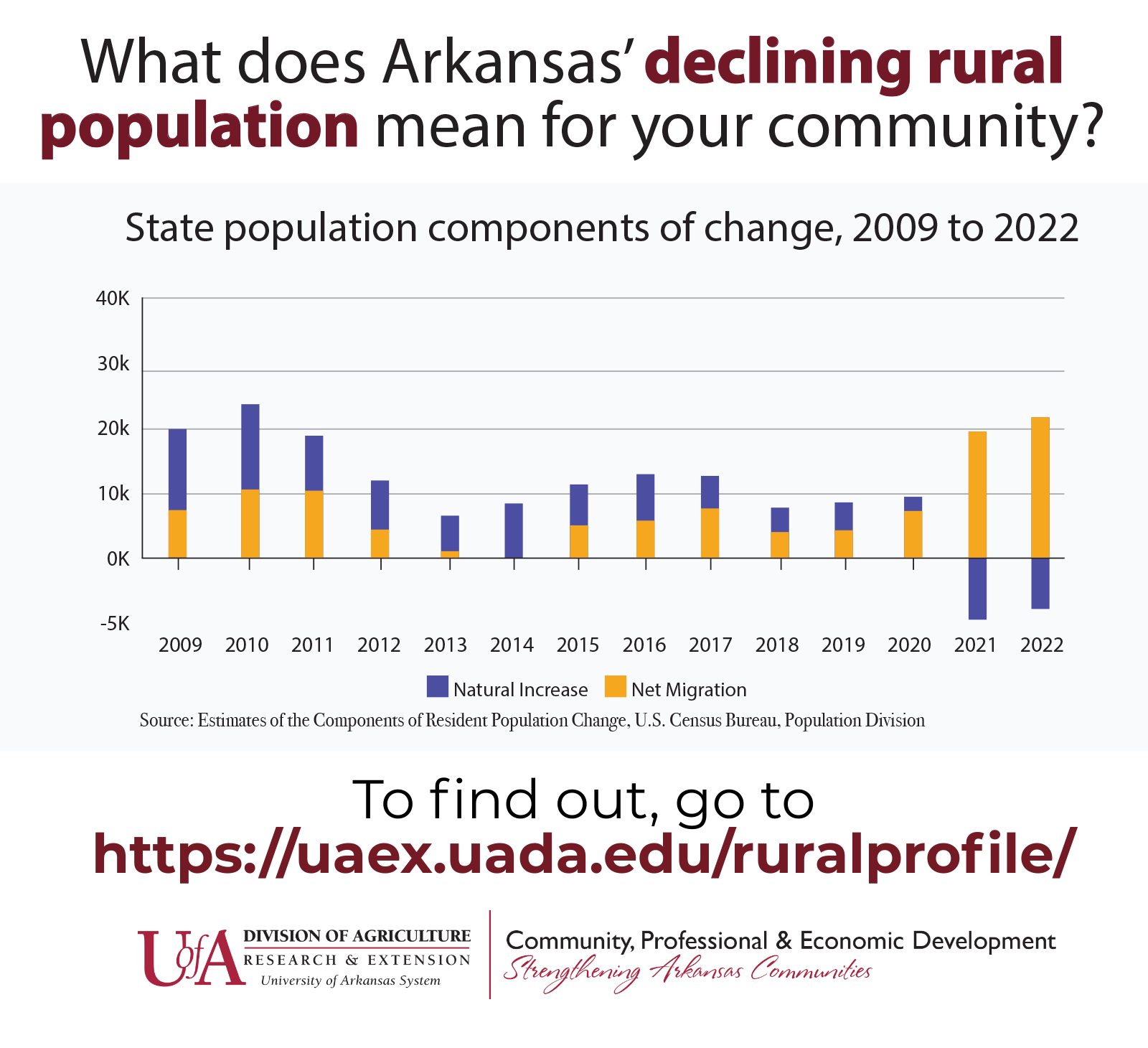 |
|
Employment |
Infrastructure |
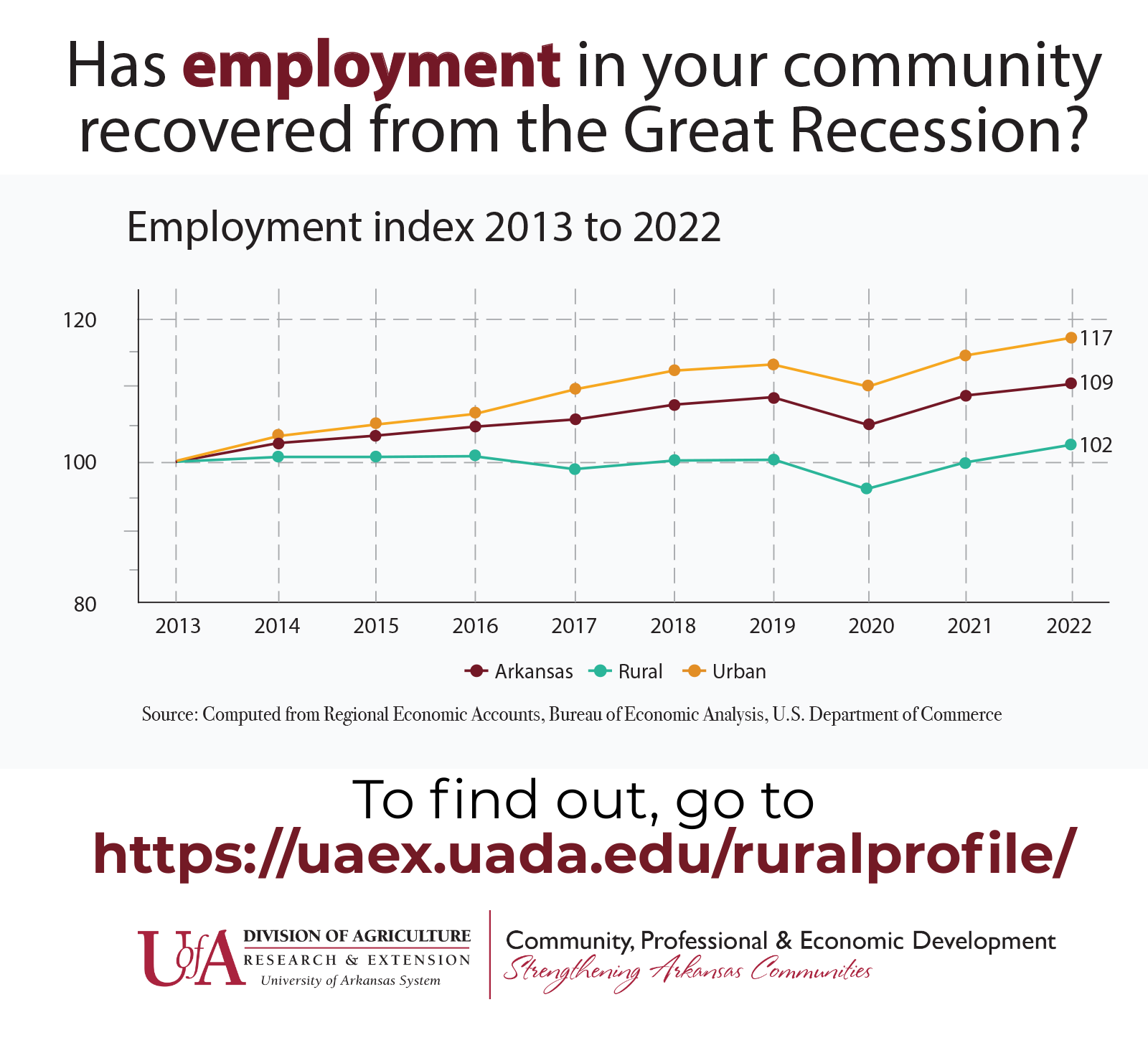 |
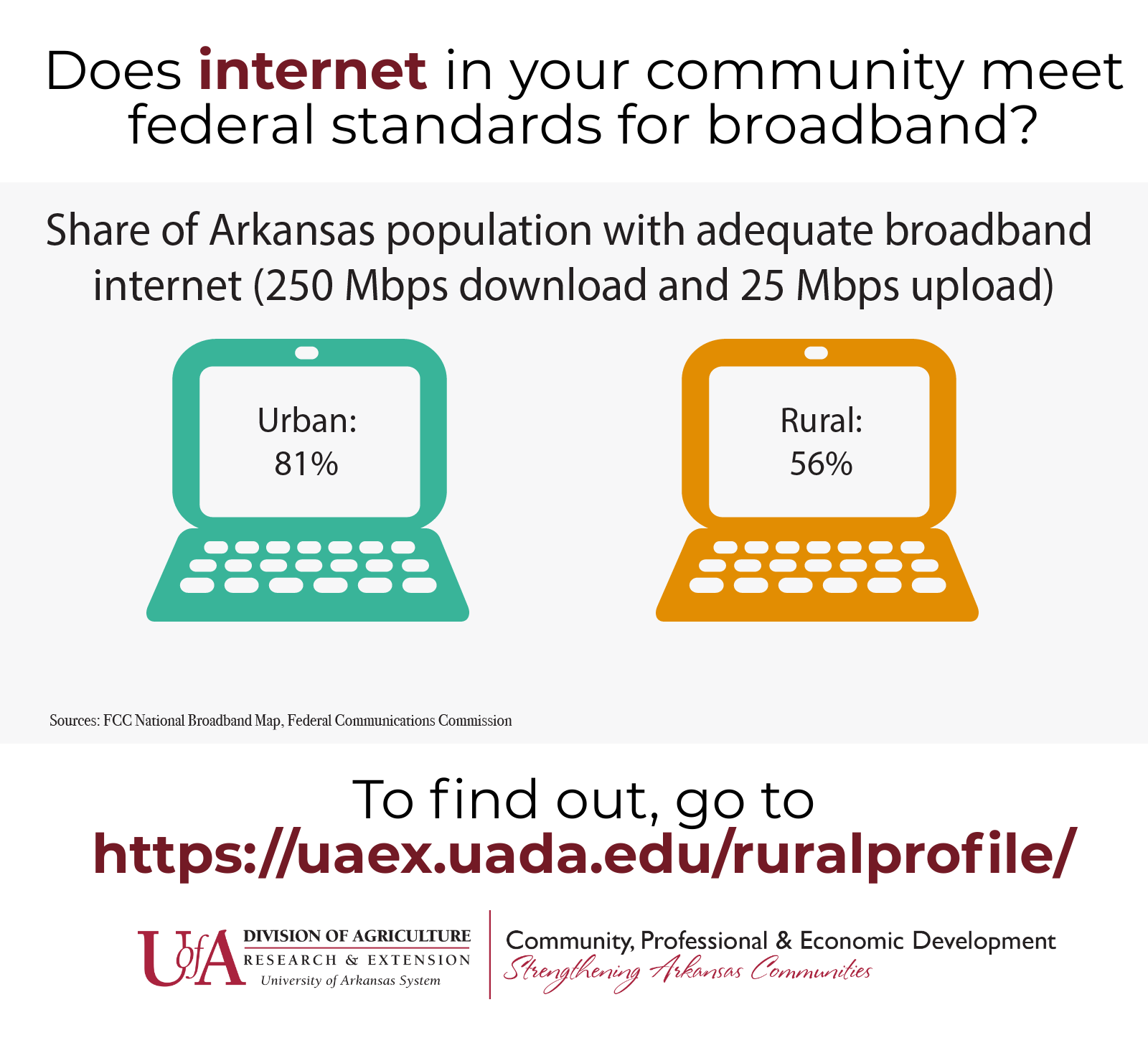 |
|
Social & Economic Stress
|
Health |
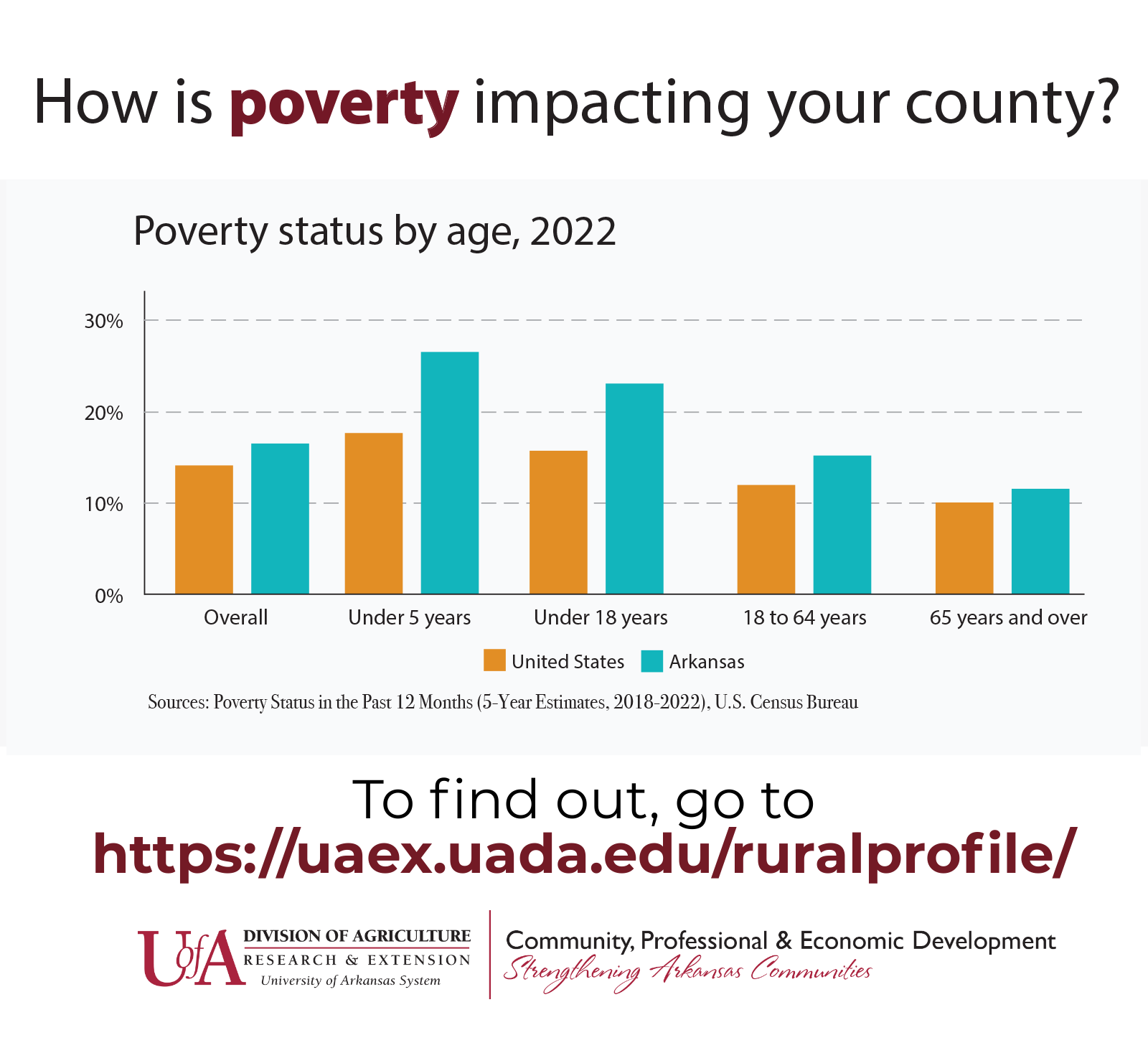 |
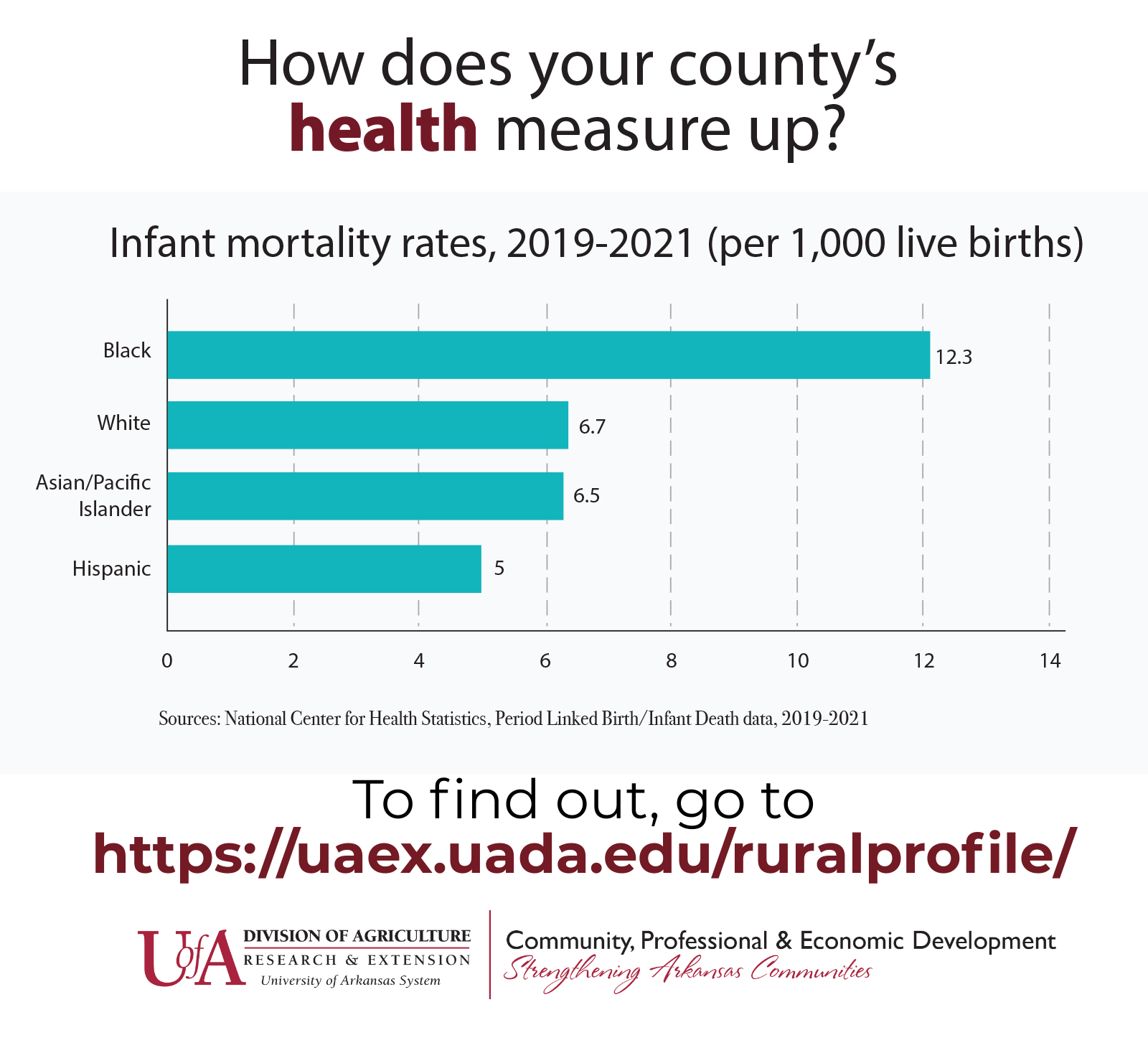 |
|
Education |
Local Government
|
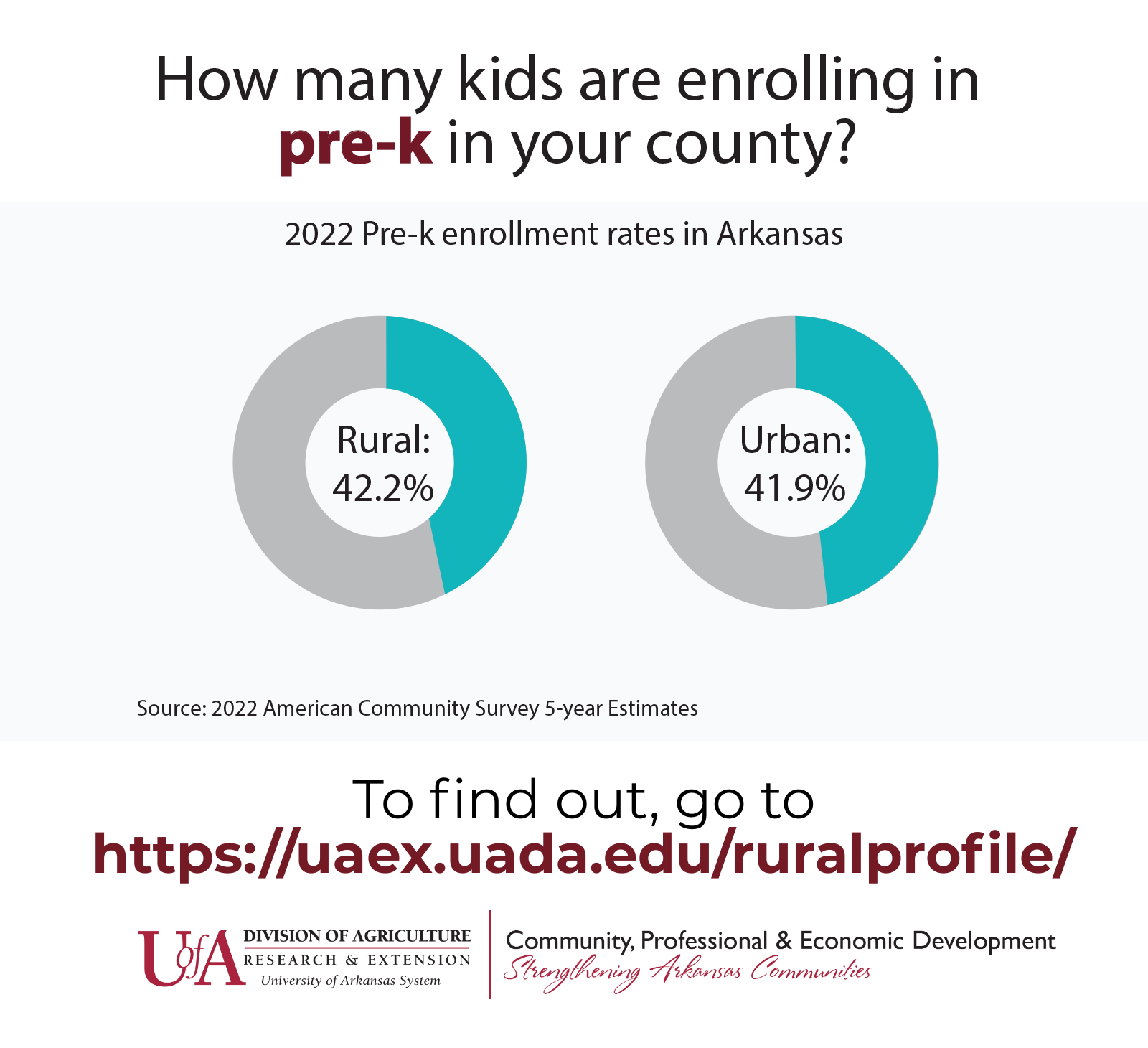 |
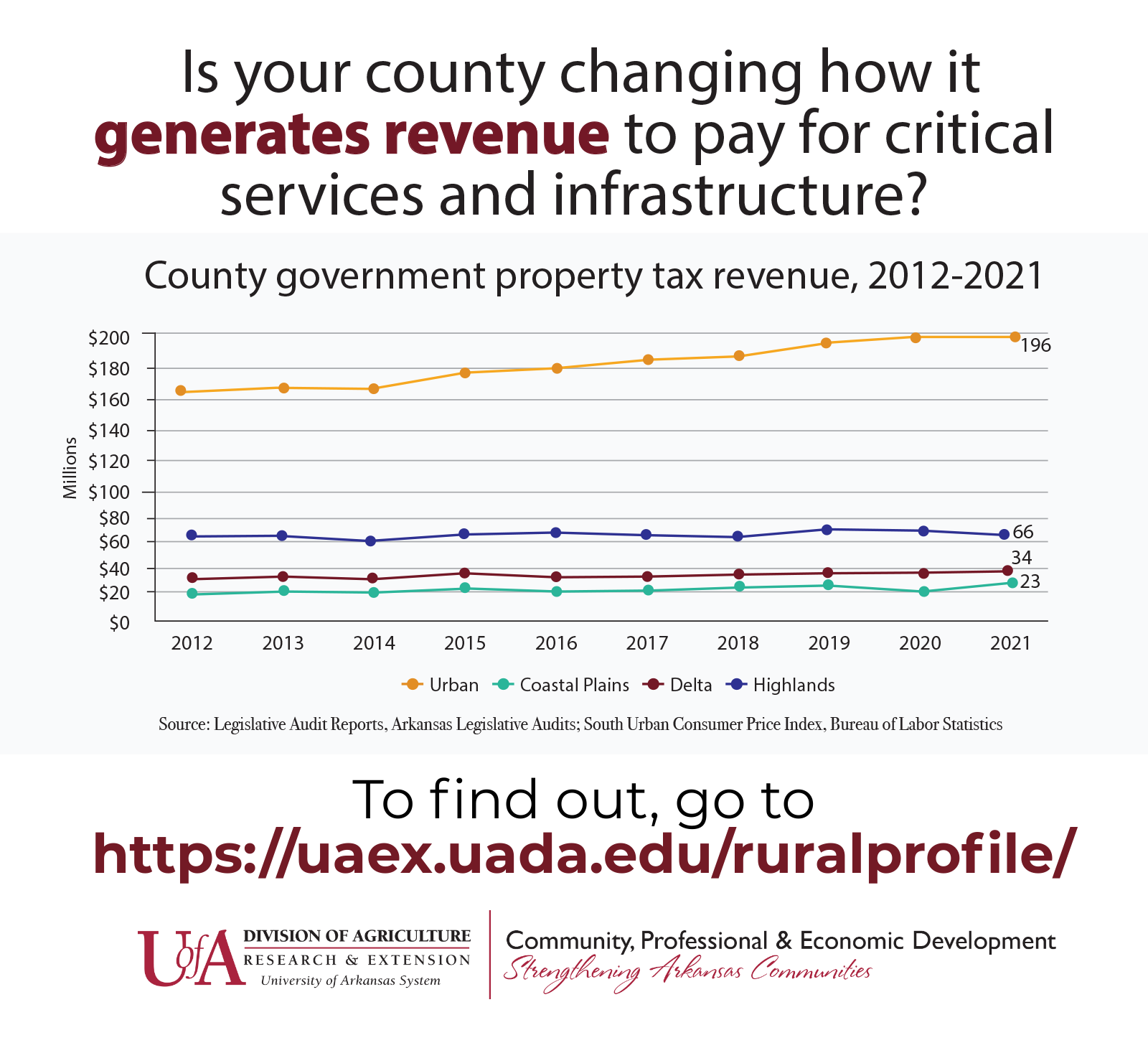 |
See the Rural Profile Data Map
Previous Versions of the Rural Profile of Arkansas
- Rural Profile of Arkansas 2013
- Rural Profile of Arkansas 2015
- Rural Profile of Arkansas 2017
- Rural Profile of Arkansas 2019
- Rural Profile of Arkansas 2021
Additional Resources
